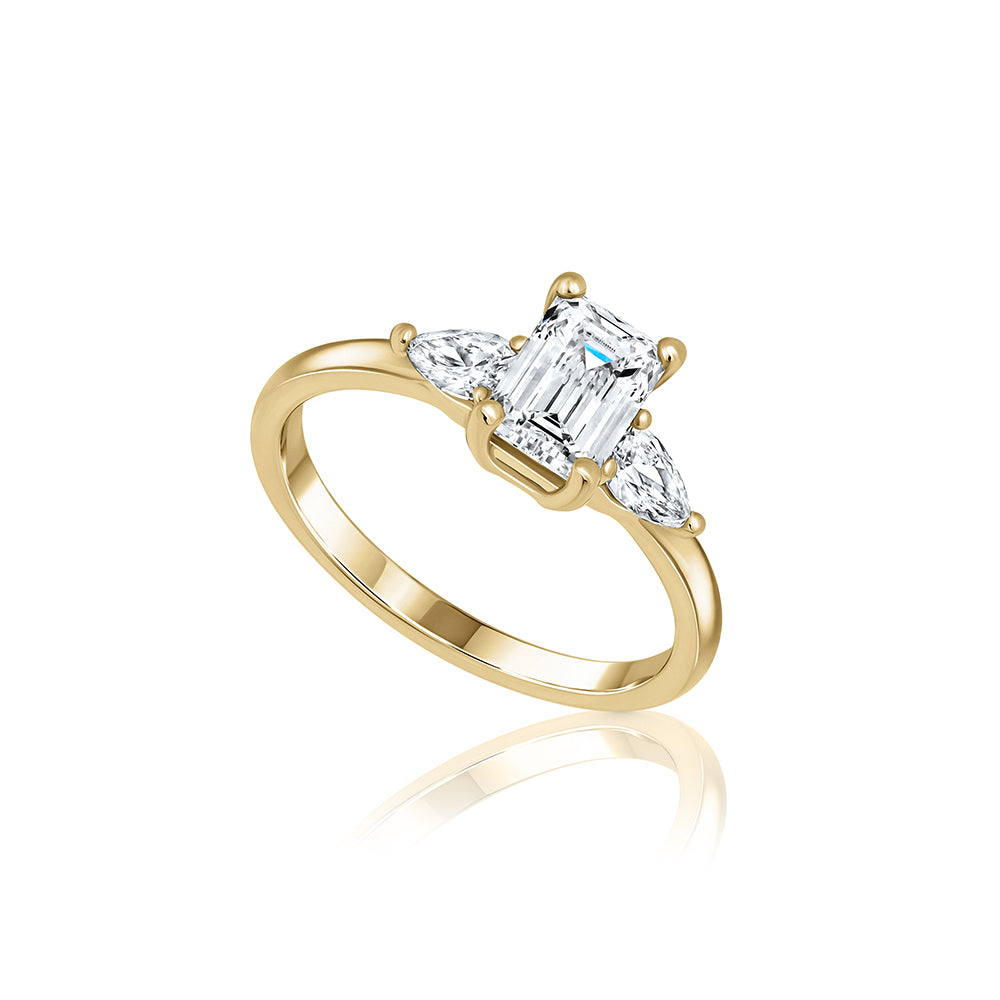Gemological Certificates - Everything You Need to Know
What is a gemological certificate?
This certificate is the identity card of the diamond you are purchasing and contains objective details and information about the diamond from a scientific perspective – its characteristics and properties such as hardness, color and degree of purity. The findings appearing in the certificate are tested and determined in a gemological laboratory according to international standards and criteria, hence the certificate will be valid and correct not only in Israel but throughout the world when it reaches the hands of people in the field of jewelry, diamonds and gemstones. Only on the basis of this certificate and the information appearing in it can the value of one diamond or another be determined.
A gemological certificate is usually issued for a single diamond weighing over 30 points.
In cases where the central diamond is less than 30 points, it is not customary to issue a certificate and the details on the tax invoice are sufficient.
There are gemological certificates only for the diamond, and there are those that include the entire piece of jewelry and the value for insurance purposes.
What features appear in the gemological certificate?
Below are some of the important details that are required to appear on the gemological certificate and will indeed appear on it if it was produced by a recognized and certified laboratory in this field:
- The type of stone – what raw materials is the diamond or gemstone made of?
- The external cut shape – the cut indicates the shape of the diamond or gemstone, and in the world of jewelry design, this is of great importance.
- Weight – The weight refers to the overall weight of the diamond or gemstone and also to the carat – the percentage of pure raw material found in the mixture.
- Color – Color is of great importance in the matter of gemstones and diamonds and is not determined or created arbitrarily.
- Cleanliness – There is no doubt that this is an important and essential feature, as in diamonds in particular, it is of enormous importance to have the highest possible degree of cleanliness.
It is important to know that there are several types of certificates today, and some will also include other details or features. However, all types, without exception, will include the important features mentioned.
What does it mean for a diamond to have no gemological certificate?
It is very important to know that the presence of the certificate indicates that it was examined and tested in an official gemological laboratory, free from interests and with objective motives. Only by presenting the certificate can one know exactly what the characteristics of the diamond, jewelry or gemstone are and there is no need to prove, try to show this or that information or convince people about the value of the diamond. When a situation arises where one tries to estimate the value of this or that diamond, the certificate forms the basis for this and experts in the field may refuse to deal with a diamond that does not have a certificate.
As mentioned, gemological certificates are relevant for a central diamond over 30 points.
Different types of gemological certificates
As mentioned, there are several types of certificates that are used around the world. The different types differ from each other in the more or less well-known laboratories in which they are produced or in the countries where the certificates themselves are respected. For example, the most stringent certificate, but also the one that is respected in the vast majority of countries, is called GIA and is produced in a laboratory with branches in the United States - in New York and Los Angeles. This is a laboratory with a good reputation that is known for its objectivity and the certificates it produces are recognized all over the world and you can trust and rely on the information that appears in them. In addition to this type, there are other types that are valid only within the United States or in the Middle East and Africa.
There are several different institutes that we work with, depending on the piece of jewelry.
Israeli gemological certificate
In the Ramat Gan Stock Exchange complex, you can find several gemological laboratories that examine diamonds in depth and produce the certificates and information that is required to appear in them. However, they have a different assessment and a different attitude from jewelry and diamond professionals around the world, and naturally they are less respected, as there are other bodies that are considered leaders in the field.
What does the lack of a gemological certificate mean?
As mentioned – thanks to the information that appears in the certificate, it is possible to estimate or even determine the commercial value of a particular diamond if it is necessary to sell it. From this it is easy to understand that the absence of the certificate may make it very difficult to estimate correctly and accurately, and therefore the diamond will be sold at a value reduced from its true value! Moreover – the gap may be huge and a lot of money will be lost to the owner of the diamond, since it will be impossible to estimate its true data and hence determine the price that best suits its properties and characteristics. From the buyers' side too – it is not recommended to buy a diamond without its gemological certificate, since it is impossible to know what its nature is, whether it is real and what its important characteristics are.
What is the best way to purchase diamonds and gemstones?
Anyone interested in buying a diamond must do so under the close supervision of professionals who are experts in this field. There is a lot to know and what to verify, and since large sums of money are involved and there are serious consequences if the diamonds are fake or have unreliable certificates, it is of utmost importance to pay attention and make sure that the professional is indeed qualified and licensed to deal in jewelry. He will be familiar with the leading businesses in the field, he will know how to read the gemological certificate and understand its implications for all parties.






